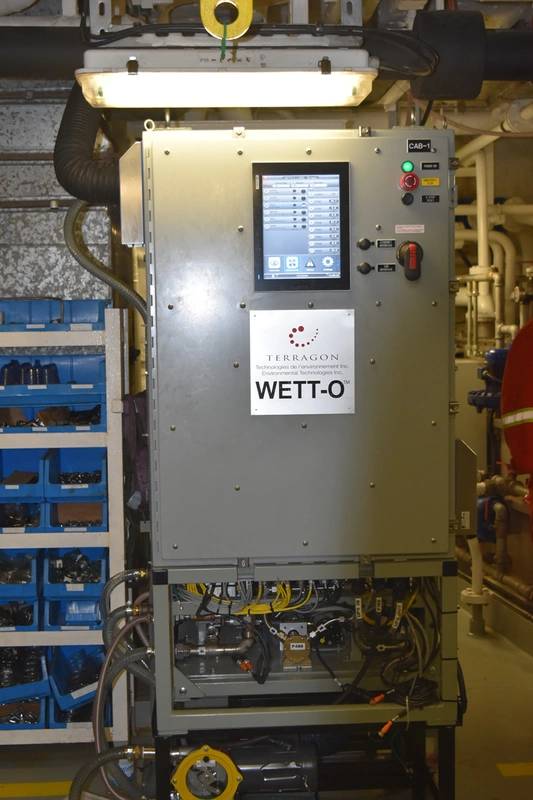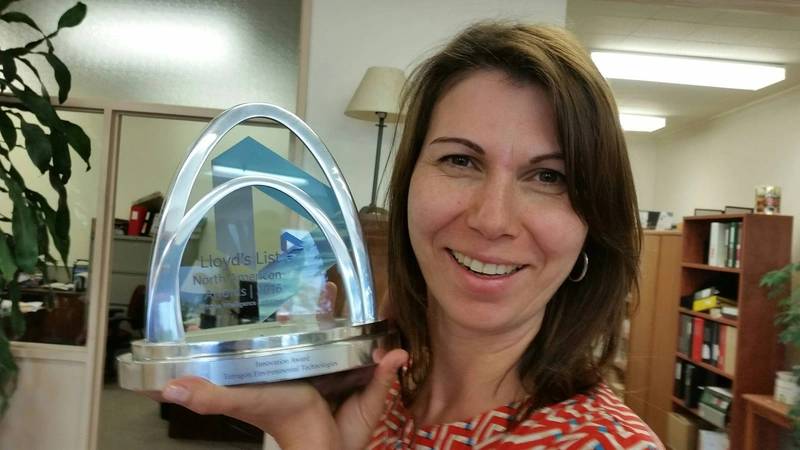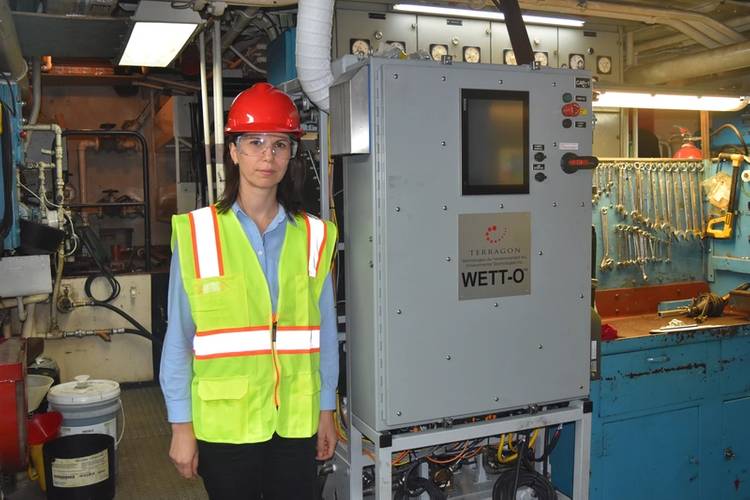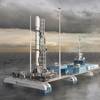Water Treatment: Inside WETT Technology for Oily and Black Water Treatment on Ships
Attracted by the environmental mission of Terragon Environmental Technologies, Dr. Ramona Pristavita, Terragon’s Vice President of Engineering, discusses the operational advances and advantages that Wastewater Electrochemical Treatment Technology (WETT) offers to shipowners.
Handling a variety of shipboard waste water efficiently, effectively, is a central tenant to ship operations.
Operating in the harsh saltwater environment, with a broad spectrum of ship movements and vibrations, waste water treatment systems on ships at sea must be rugged and adaptive, able to handle a variety of contaminants while requiring minimal crew intervention and maintenance, particularly today as the duties of the seafarer are stretched thin with increasing levels of technological sophistication.
Terragon has spent more than a decade engineering, developing and delivering its WETT family of products. Terragon’s patented approach that can be used to treat water for recycle or reuse and treat water for safe discharge. The WETT solution is based on electrochemistry and a design philosophy that eliminates biological treatment, disposable filters and membranes, and the need to add chemical reagents.
The WETT approach is particularly well-suited for: decentralized water treatment; situations with low to moderate flowrates; variable influent loadings and concentrations; highly contaminated wastewater; need for automated and maintenance-free operation; and the need for on/off capability.
“Electrochemistry is a very solid process,” said Pristavita, who a chemist by training. “The process is not affected by dyes or certain type of cleaning products. And it’s a technology that can be fully automated, that doesn’t require so much operator interaction; you don’t have to dose chemicals, you don’t have to clean filters. It’s easy to work with, easy to maintain and, in short, it’s plug-and-play.”
The WETT line today consists of three main products:
- WETT-O, which stands for oily water or bilge water and
- WETT-S, which stands for sewage.
- WETT-G, which stands for greywater (WETT-G is in the final stages of development)
According to Pristavita, WETT-O and WETT-S have been developed and certified by class specifically for marine applications. “It’s state-of-the-art technology, very modern and easy to use with touch screens.”
While optimized for maritime, the WETT line-up is equally well-suited and proven for land-based operations. “Electrochemistry is a solid process, so you can use it in different industries for different waste water streams, for greywater, for example, treatment for use in oily water. For example, we have other clients use the same technology we install on ships. It’s garages, where the maintenance facilities for aircrafts and for trains. Anyone who’s producing oily water for example, can use our WETT-O. The same way with the black water and sewage, anyone who’s producing this type of waste waters can use our WETT-S technology.”
 Photo courtesy Terragon Environmental Technologies
Photo courtesy Terragon Environmental Technologies
Inside WETT Tech
Central to all WETT systems is a marinized Electrocoagulation (EC) unit which has been developed over the years to overcome the difficulties that are common to many simple EC units available commercially.
The EC unit has self-cleaning and anti-passivation features. It operates continuously and performs automated contaminant coagulation, flocculation, flotation, separation and removal in a single enclosed reactor. No polymer addition, settling or flotation tanks, or filters are required.
Typically, the EC unit removes about 75% or more of the total suspended solids (TSS) and chemical oxygen demand (COD) present in the wastewater, along with complete removal of phosphorus and heavy metals.
There are two sizes of EC unit available; a smaller one that treats at 1.0-1.5 Lpm, and a larger one that treats at 5-7.5 Lpm. Multiple EC units can be arranged in a parallel fashion to treat larger flowrates than can be accommodated by a single EC unit.
“If you install a WETT-O system, it’s going to remove all the contaminants, not just the oil,” said Pristavita. “So it’s going to remove suspended particles, rust, dyes, nutrients, heavy metals … everything that it’s in there and can be coagulated, it’s going to be removed from the waste water and it forms a foamy sludge.”
That foamy sludge floats on top of the reactor and is periodically removed. Key to the WETT system is that it does not add mass in the process. “The volume of this sludge is very low. It’s about 5% by volume,” said Pristavita. “Because for example, if you compare with chemical coagulation, we don’t add a mass of salts. We add aluminum items and the treatment can be fine-tuned for how much aluminum is needed to remove the concentration of contaminants.”
Key to the WETT system is automation, as operator participation is not needed to dose the system, measure pH or clear filters.
Depending on the type of WETT system deployed, treatment units are added before or after the EC unit.
“For example, on WETT-O, we have a free oil separator before the electrocoagulation unit that removes everything that can easily float or sink. Then the emulsified oil, the very small particles that cannot settle or float, are removed in the electrocoagulation unit.”
For black water treatment, streams that are generally heavily contaminated with organics and viruses and bacteria, “we use for polishing, we use electrolytic oxidation and we use a special type of electrodes, which are not consumables,” said Pristavita.
Each EC unit contains one pair of sacrificial metal electrodes, given the ability of the system to operate at comparatively high current densities. This simplified approach means that installation of a new set of electrodes take less than 10 minutes, which depending on system design may be required every 1-3 months.
“(The electrodes) produce hydroxy radicals, which are very strong oxidants” that essentially kill and mineralize everything in the stream. “So you are not only doing a polishing in terms of removing contaminants, but you are also disinfecting and you don’t have to add any chlorine or any other disinfection products,” said Pristavita. “They are robust, they remove virtually everything from the stream, they disinfect without the need to store on onboard chlorine products and you don’t have to backwash filters.”
 Award Winner:Dr. Ramona Pristavita, Terragon’s Vice President of Engineering, with an industry award. Photo courtesy Terragon Environmental Technologies
Award Winner:Dr. Ramona Pristavita, Terragon’s Vice President of Engineering, with an industry award. Photo courtesy Terragon Environmental Technologies


















